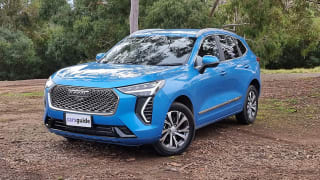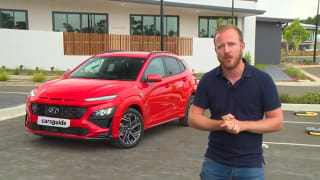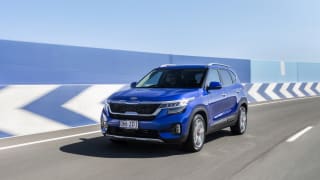The answer isn't as clear cut as the specification appears.
The un-facelifted ZS Excite now starts from $21,990 driveaway (and it’s the cheapest new SUV in Oz now, remember), before moving up to the facelifted ZST Core from $25,490, Vibe from $26,990, Excite from $29,990 and Essence from $32,990. $43,990 buys you the un-facelifted ZS EV electric vehicle.

All ZSTs include lots of active safety tech, with standard autonomous emergency braking (AEB), blind-spot monitoring, rear cross-traffic alert, adaptive cruise control, lane departure warning, traffic jam assist, automatic high beams, surround-view monitor, alarm and six airbags.
Above the Core’s keyless entry, push-button start, air-conditioning, 10.1-inch touchscreen with Apple CarPlay/Android Auto support, five USB ports, four-speaker audio system, fabric trim, centre armrest, electric heated exterior mirrors, LED headlights and 17-inch alloy wheels, the Vibe adds satellite navigation, rain-sensing wipers, front fog lights, synthetic leather trim, six-speaker audio and two-tone alloys (still on 17-inch wheels).

Accounting for the $3K jump premium, the Excite ditches the Core and Vibe’s 84kW/150Nm 1.5-litre four-cylinder engine also found in the ZS for a newer 115kW/230Nm 1.3-litre three-cylinder turbo, a gloss black grille, red brake callipers and ritzier exterior trim, while the Essence scores a panoramic glass roof, ‘MG’ embossed seating with heating function up front and powered on the driver’s side, all-digital instrumentation and yet another restyle for the 17-inch alloys. These are shod with quality Michelin Primacy tyres.
Note, however, that reach-adjustable steering, wireless smartphone charging and digital radio are not available.
Metallic paint in blue, red or silver costs $700 extra above the standard white or black hues.
Rivals include the Haval Jolion, Honda HR-V, Hyundai Kona, Kia Seltos, Mazda CX-30, Mitsubishi ASX, Nissan Qashqai, SsangYong Korando, Suzuki Vitara and Toyota C-HR.

Several ZST Essence items might dazzle prospective buyers of all of the above – including its $33K pricing combined with a seven-year warranty that’s only matched by Kia, SsangYong and Haval (though surpassed by Mitsubishi’s conditional 10-year item), as well as that vast sunroof and surround-view camera. In the Seltos, HR-V, Kona, C-HR and CX-30’s case you’ll need up to $40K (or more) to match that.
Except, that is, the Jolion (also from China), since it offers these and much more for $2K under the ZST Essence’s ask. And, as we’ll see further down, the MG’s cabin presentation and user experience is far from luxurious or premium.






















